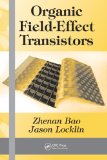Welcome to Bao Research Group
 |
R
News Feature: Stanford Researchers Create Artificial Skin That Senses Touch - ABC

See our recent work on Fast and reversible thermoresponsive polymer switching materials for safer batteries.
News Feature: Electronic Skin May Someday Restore Touch - ABC

See our recent review on The Evolution of Electronic Skin (E-Skin): A Brief History, Design Considerations, and Recent Progress.
Learn about how our wireless pressure sensor works:
Learn about our self-healing plastics:
Group Announcements
-
Read more...
 Professor Bao elected to the National Academy of Engineering
Professor Bao elected to the National Academy of Engineering -
Read more...
 Professor Bao featured as one of Nature's 10
Professor Bao featured as one of Nature's 10 -
Read more...
 Professor Bao named 1 of the 13 Most Impressive Professors at Stanford University
Professor Bao named 1 of the 13 Most Impressive Professors at Stanford University -
Read more...
 Clementine Boutry wins Best Student Paper at the IEEE SENSORS 2015 Conference
Clementine Boutry wins Best Student Paper at the IEEE SENSORS 2015 Conference -
Read more...
 Sean Andrews wins Best Poster at Oak Ridge National Lab
Sean Andrews wins Best Poster at Oak Ridge National Lab -
Read more...
 Gino wins the CHESS Student Paper Prize for his work published in Nature Communications
Gino wins the CHESS Student Paper Prize for his work published in Nature Communications -
Read more...
 Amanda Nguyen receives the NSF Graduate Research Fellowship
Amanda Nguyen receives the NSF Graduate Research Fellowship -
Read more...
 Ben Naab receives an award from the ACS Division of Polymer Chemistry
Ben Naab receives an award from the ACS Division of Polymer Chemistry